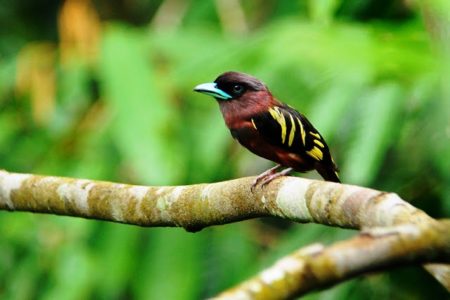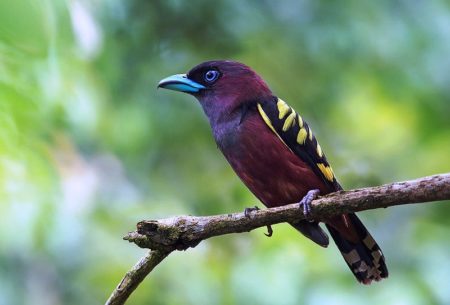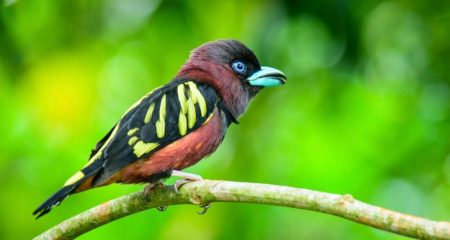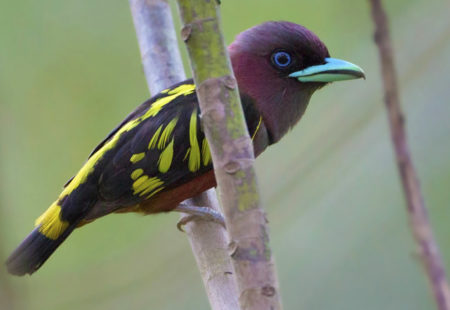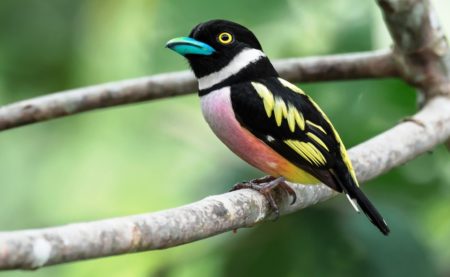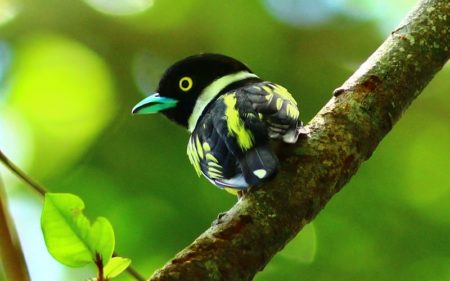The banded broadbill is a species of bird in the family Eurylaimidae. The banded broadbill “Eurylaimus javanicus”. It is found in Brunei, Cambodia, Indonesia, Laos, Malaysia, Myanmar, Singapore, Thailand and Vietnam. The bird’s natural habitat is tropical or subtropical moist lowland forests. The species is a husky, forest-dwelling bird with a large head and wide beak offset in shades of violet, black and yellow.
It has a large purplish-black band on its chest, blue-gray eyes, several yellow spots on its wings, and some yellow on its rump. The birds prefer swamp forests, evergreen forests and mixed deciduous forests near rivers and streams in plantations, gardens and parks, and around villages.
The species is a large broadbill averaging 21.5 to 23 cm, with purple, yellow and black plumage. The diet consists mainly of insects, including grasshoppers, crickets, katydids, various beetles, caterpillars and larvae which are also recorded eating figs. The species naturally builds a large nest suspended from a tree branch.
The bird’s voice is a typical song: a short, high-pitched, prolonged “wheeoo” that continues with a long, ascending trill that can last up to five seconds. The banded broadbill is similar to the black and yellow broadbill, except that it is mostly venated in black and peach, not purple.
The species is assessed as Least Concern because it has an extremely large range, so it does not approach the Vulnerable thresholds based on the range size criterion. This species may rarely be targeted by the cage bird trade, with some loss of forest within its altitudinal range, especially around Carita, and even at the lower edges of protected areas. Naturally, the bird sits motionless in trees, in small groups or pairs, and searches for moving prey. When they see something, usually in the foliage, they fly out to grab it.
